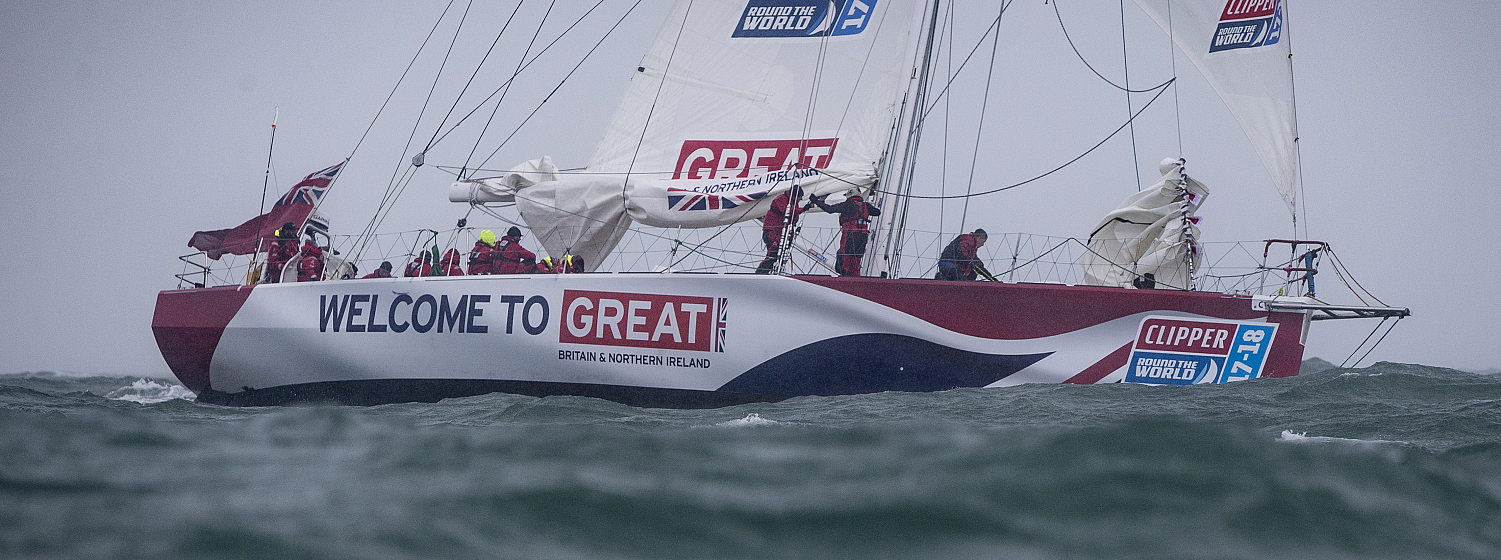Race 9 - Day 26
Crew Diary - Race 9 Day 26: Qingdao to Seattle
18 April
It's incredible how you can make do with so little yet there are times in your life when you feel like you have everything but still not enough. When I packed for this trip I couldn't figure out what I needed and what would be safe to leave behind. I packed, unpacked, repacked and still didn't know what to do with the rest of my "stuff" that might or might not be needed for 3 months at sea. The thing is, I really didn't need the things I left and I haven't even used everything I brought. The biggest mystery is how I can go one week at home and have an entire load of my own laundry to wash but then I come sailing for a month and I barely have enough to cover the bottom of a washing machine.
Things I have learned to consider when packing:
1. What is the temperature going to be like? If it's going to vary in temperature make sure you have at least one set of clothes for the hottest temperature and one for the coldest. I almost forgot to pack shorts for leg 5 because I was so focused on staying warm during leg 6.
2. Make sure clothing is neutral or similar in colour so you can mix and match the pieces. You will always have an outfit for temperatures in between without having to take up more space of a complete other set of clothes.
3. Label everything! I have all my clothing organized in ziplock bags labelled with what is in each. I have never tried to put gloves on my feet or pyjamas (which are unnecessary on this boat because that's what your baselayers are for) instead of your week 3 outfit.
4. Keep track of all your items, know exactly where you store them and return them to where they belong when not in use. Week 2 baselayers are a mystery at the moment and will hopefully turn up during deep clean? Otherwise being able to reach into your cubby and know exactly where your bag of clean underwear/knickers are will make it a lot easier to change them regularly because there is no time to unpack and repack your cubby on a regular basis.
5. What is supplied and do you really need more? Secret stash of treats only needs to be a couple treats of your personal favourite things because the people preparing the menu have already considered everything else (thank you Jayne and Emma!). Unless you are a Marmite lover travelling outside the U.K. because no one else eats or sells this in other countries... 16 chocolate bars, 6 packages of candy, 2 ziplocks full of mentos, 3 bags of crackers, jar of peanut butter, jar of Nutella, tin of hot chocolate, 10 individual packages of soup, and a can of sprite all take up a lot of cubby space and are completely unnecessary and have been barely touched due to the fact they are a pain to get at most of the time.
The entertaining part is how you have to strategically plan wardrobe changes based on so many things. Things I have learned to ask before changing:
1. How gross are your clothes, how many more days you have at sea and what clothes do you have left?
2. How much time do you have, how cold/wet is it and how many layers do you need to be deck ready?
3. Where do you change? You need both hands to put on or remove your clothing and/or steady yourself when the boat is heeling. Do you try and change in your sleeping bag where you can't really bend your knee to your chest to get your foot in the foot hole of your pants? Is there enough space to even change in your bunk without punching or kicking the bunk above you as you fight your way into your clothing? OR do you get out of your bunk and change in the hallway where there is a risk you fall into a bunk whether that is your own or if you are on a top bunk that may be someone elses that may or may not be occupied at that time? If you're heeling over or it's bumpy, do you risk that much exposed skin to the air or risk it touching the cold wall?
4. Who's around?
5. Is anyone in the bunk above you? If so be careful swinging your arms into your shirt and then sit up to get it over your head because if that person is sleeping, they probably don't appreciate that nudge you just gave them. If you are on a top bunk the ceiling doesn't really care but it's not very forgiving...
6. When it is really hot, how few layers do you strip down to so your bum gets air to prevent/reduce yachty botty?
7. When it's cold, do you even want to change because it's too cold to remove the warm clothes from your body and replace them with cold ones?
8. Did you remember to put your clothes in your sleeping bag with you? It keeps them warm and makes them easy to find when you wake up (unless you start sleeping with half the clothes you brought and then your sleeping bag feels very small and you can't find anything!).
9. How many layers can I fit under the drysuit before I can't get in it or it won't do up?
10. Are these mine? Everyone has clothing that looks similar so making sure you grabbed the right drysuit from the wet locker (in case you put yours on the wrong hook - sorry Luise), the right boots from off the deck when everyone is trying to dry them (make sure you get your own in case someone brings you Niclas' boots instead and you don't notice right away) or the right lifejacket so you don't have someone frantically looking for their desperately hoping it didn't make it into the UNICEF bag.
Offshore sailing and completing ocean passages is not a fashion statement. The popular crocs and socks below deck has recently developed to be crocs and drysuit on deck. With the bad weather we had and large waves breaking over the boat, everything was very wet including water that could be poured out of your boots. When the sun came out and seas started to calm, boots were on deck drying and a new level of croc fashion was developed. Hairstyle is not important. You get out of bed, put a hat on then go on deck, come off deck, take the hat off then go back to bed. If your hair is sticking straight up, falling out of your ponytail, greasy or knotted, no one judges you and it's perfectly acceptable. Recently my hair/ponytail had it out with my hat and caused it to slowly slip up my head where it rests with the bottom covering just the tip of my ears barely staying on. Dave gets a good kick out of this and I realized in my reflection it looks pretty funny but I can't be bothered to continuously fix it or dig out another so a ridiculous look it will remain.
Gracefulness is another trait that is not found on the boat.
Climbing into a top bunk: contortion type movements bracing yourself as the boat goes through the waves.
Coming up the companionway: crawling under the flap keeping the waves out without putting added strain to the attachment points where it could fall off while on a heel looks kind of like a toddler crawling through a cat flap
Crawling under the traveller: once all bundled up in your kit and lifejacket there is not a lot of room to crawl under something with about a half a metre clearance, if that, the contemplation of going head first or feet first, on your stomach or back is interestingly put into execution.
Despite all of these things, we are all fighting the same battles and laugh about all the difficult things because humour is a fantastic cure to struggles on the boat. Even post meltdowns when you tack and all the oranges fall out of the bin on top of you or you broach and almost have a code brown incident in the heads. They end up as GREAT stories to tell amongst fellow crew members and will provide stories to tell generations after us remember our experience as part of the GREAT team.
From a boat of GREAT people and GREAT fun,
Alanna Ticknor
P.s. The bread making is still a success and by success I mean it's being eaten every morning and I keep getting asked to make more. I've even got a bit creative and made a couple cinnamon raisin loaves and we did a loaf with chocolate insisted by Stefan to help use up some of his large chocolate stash.

